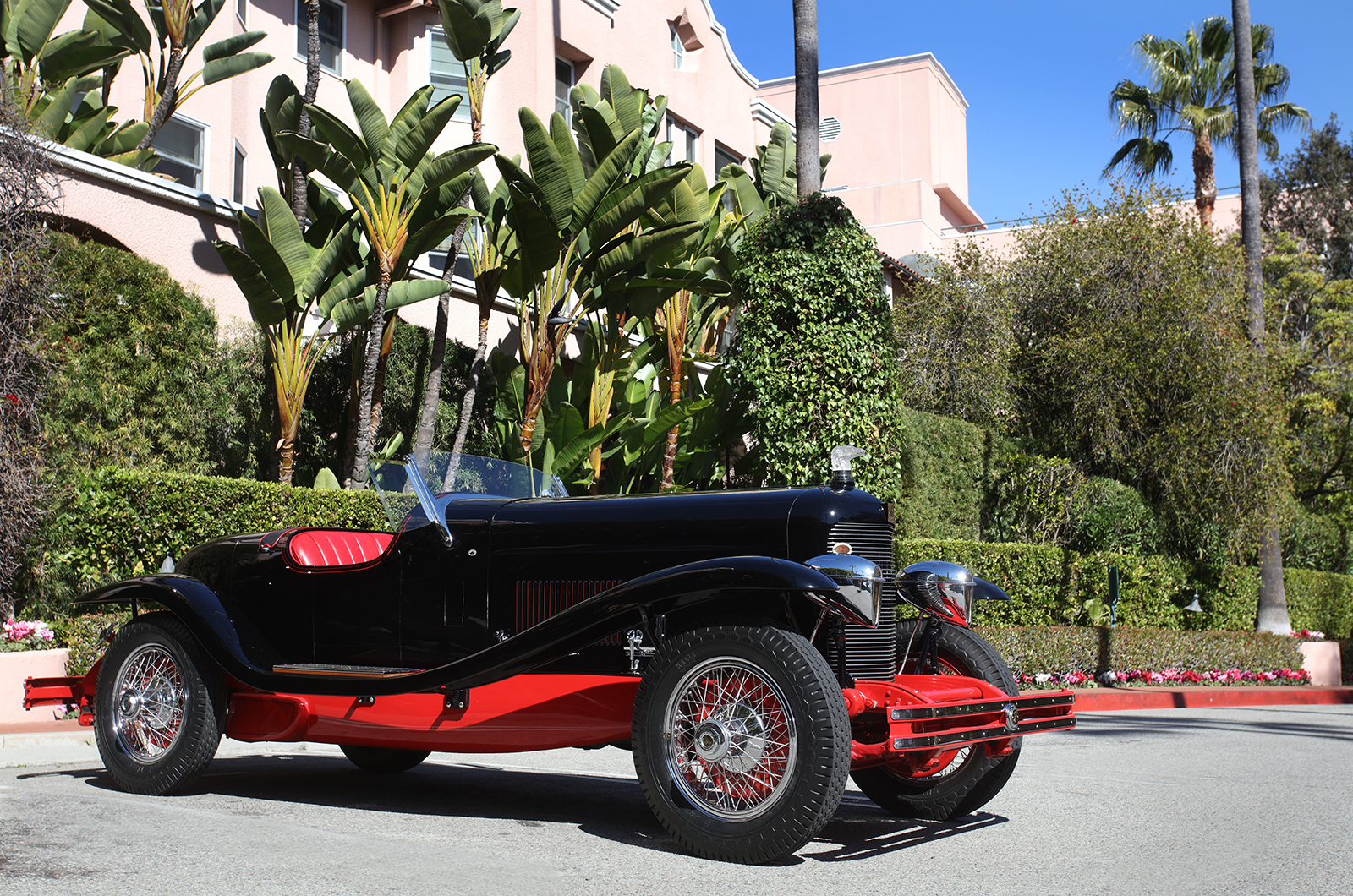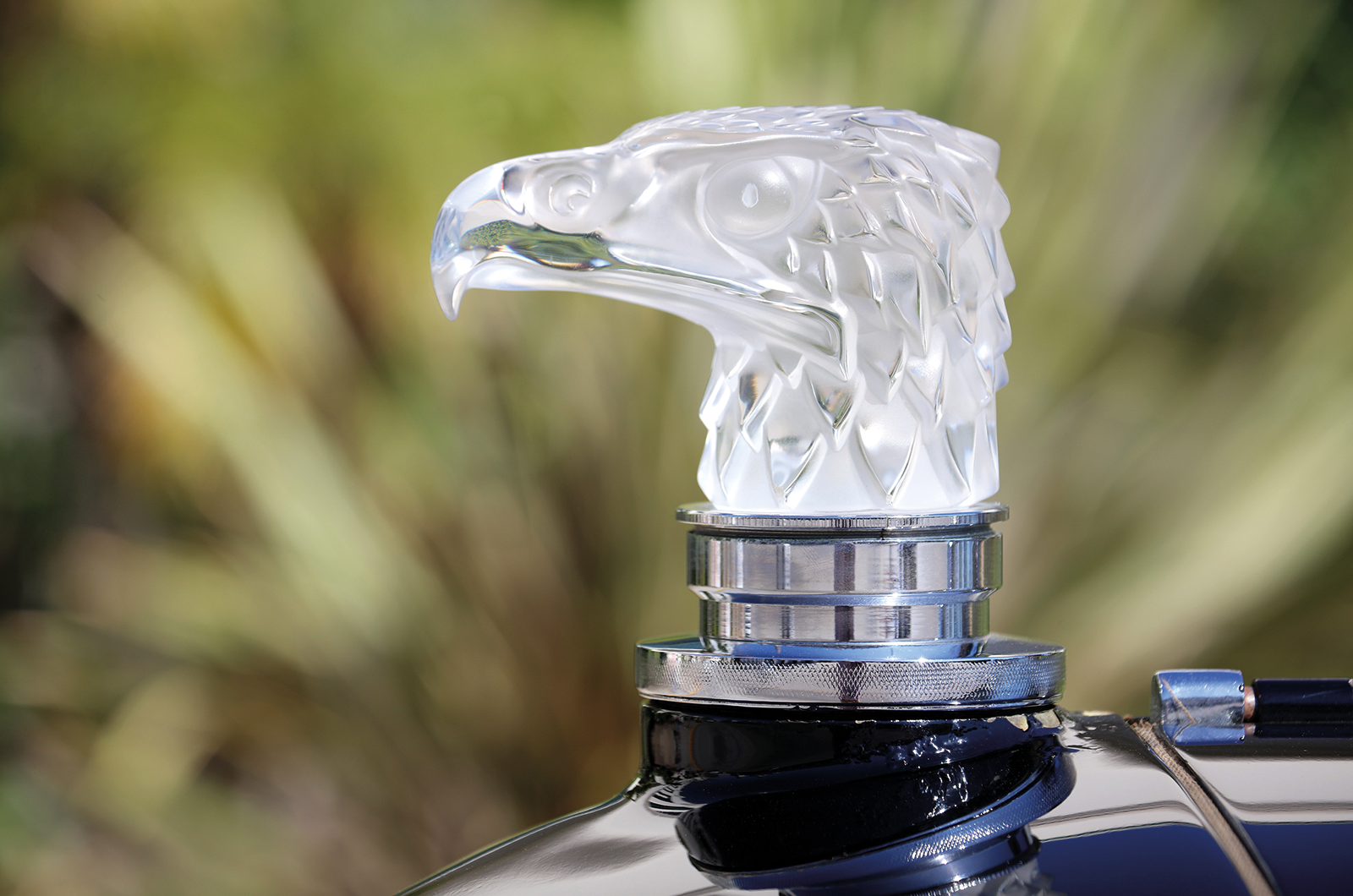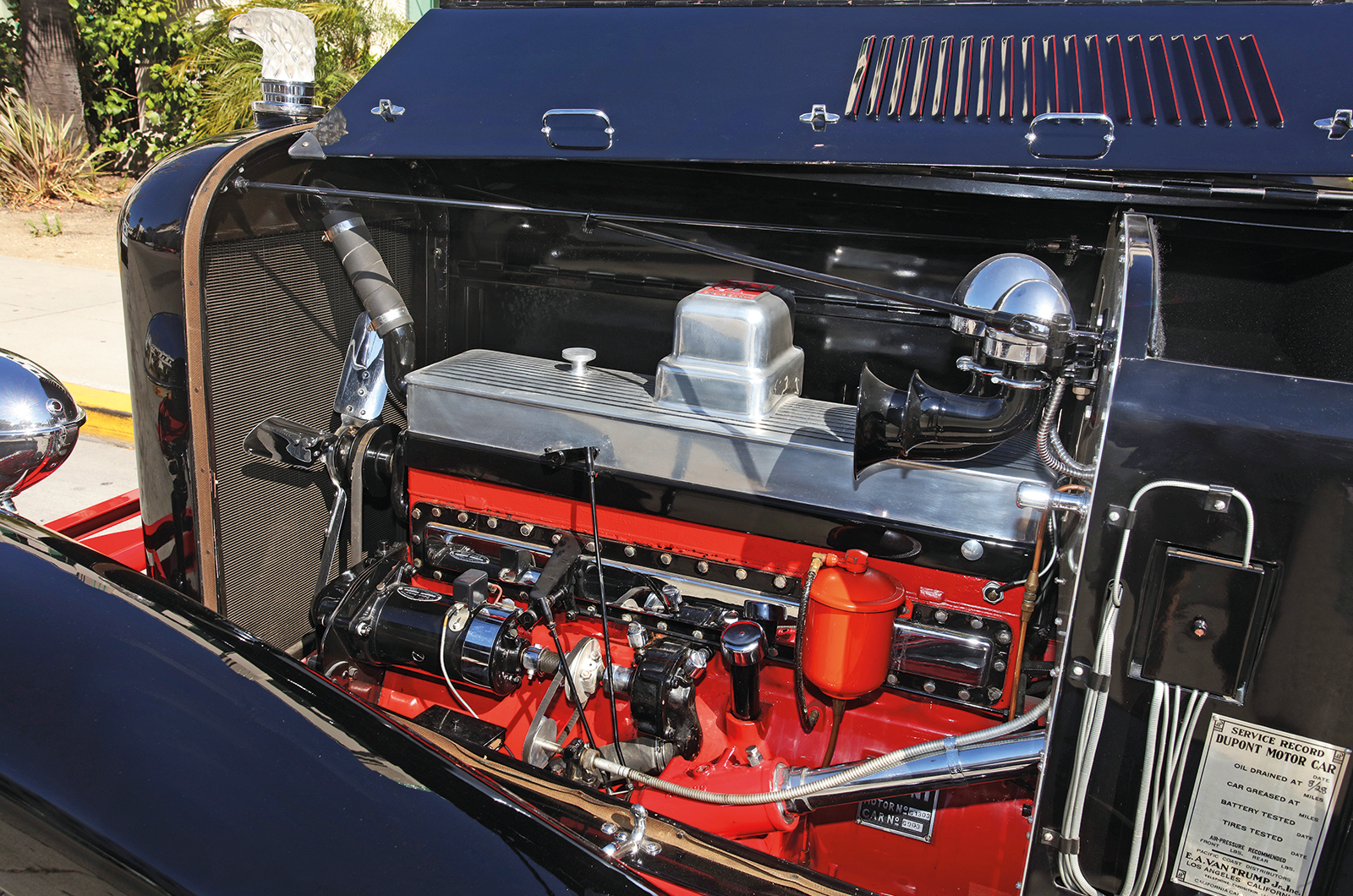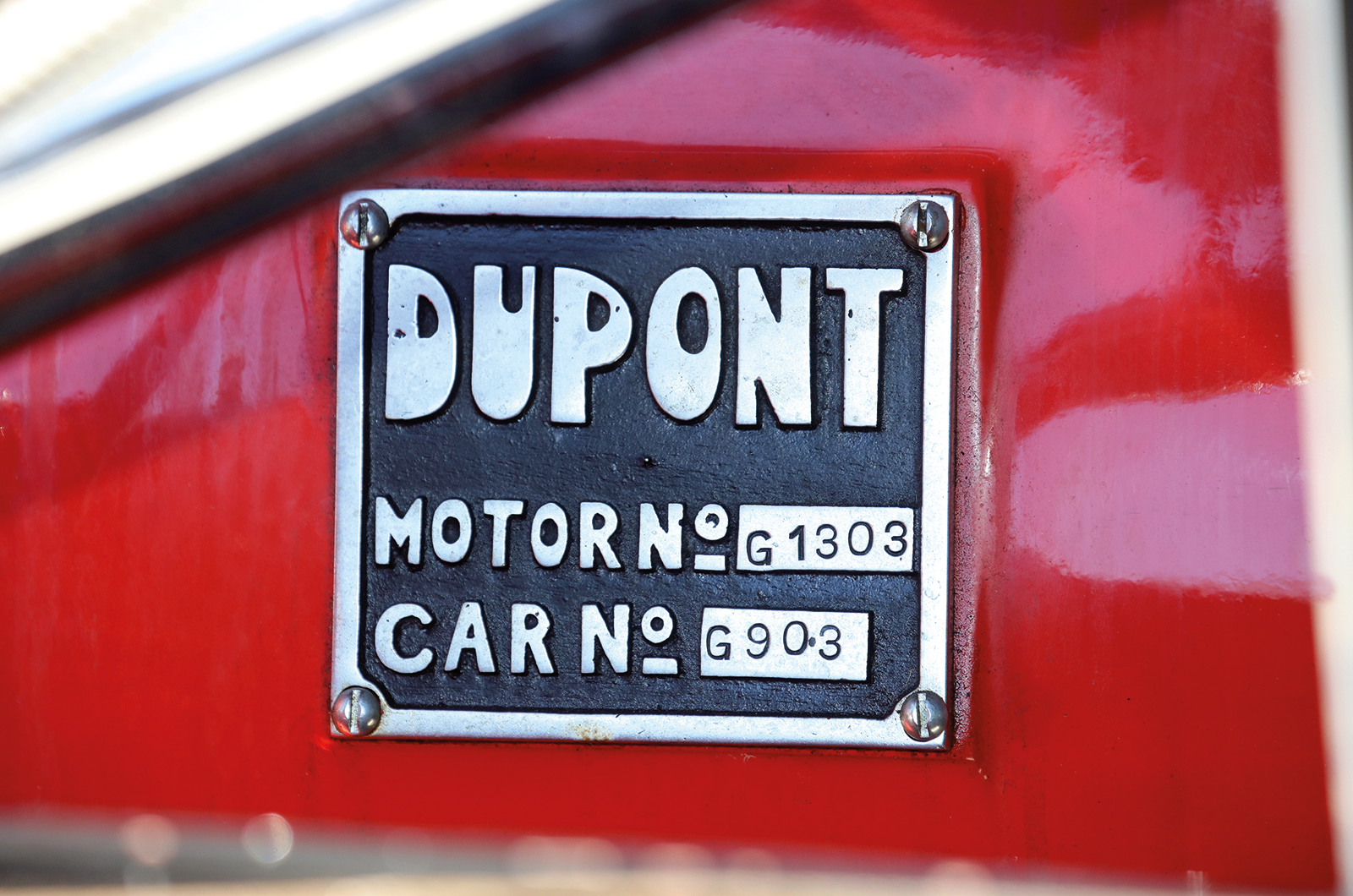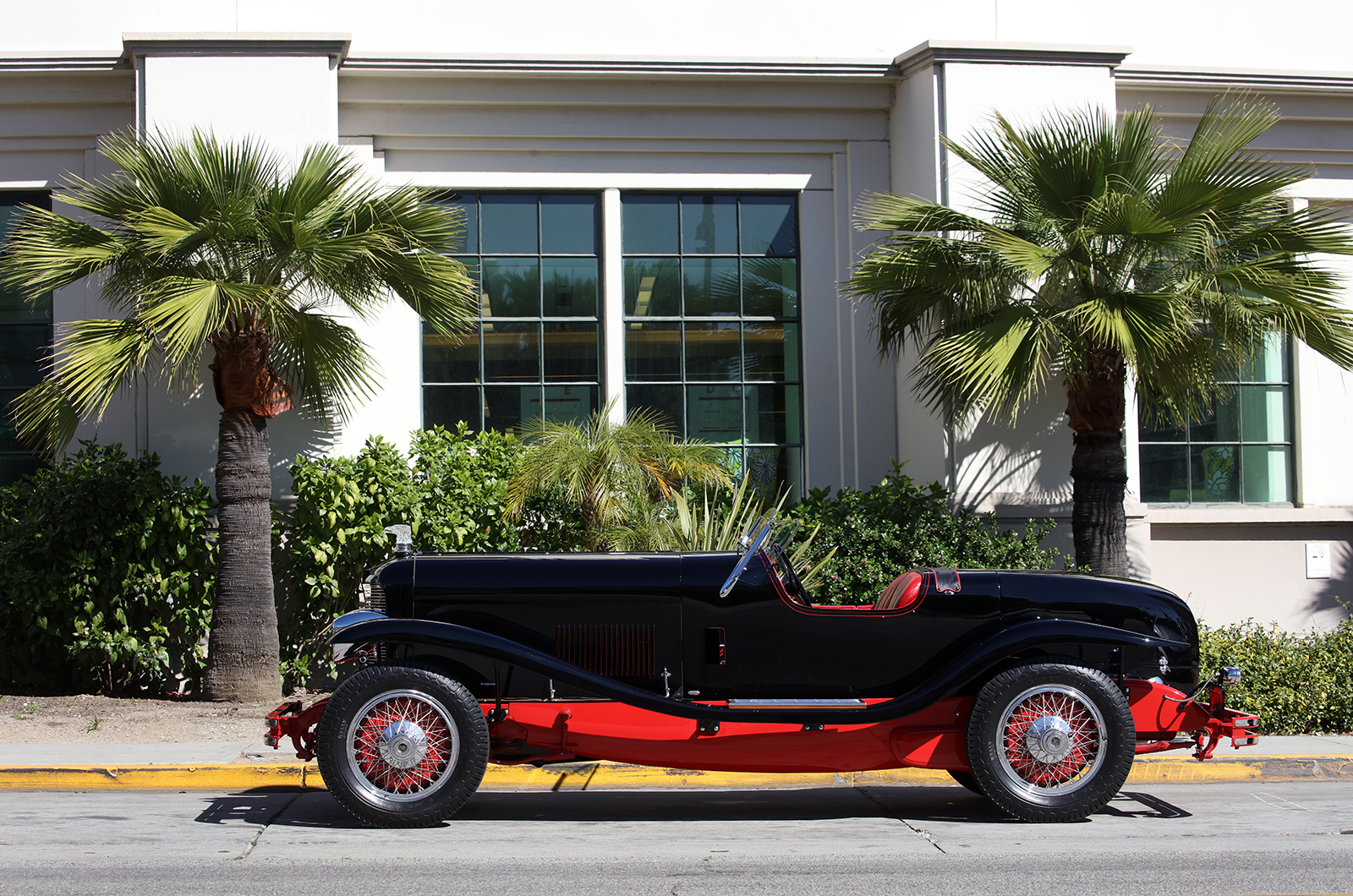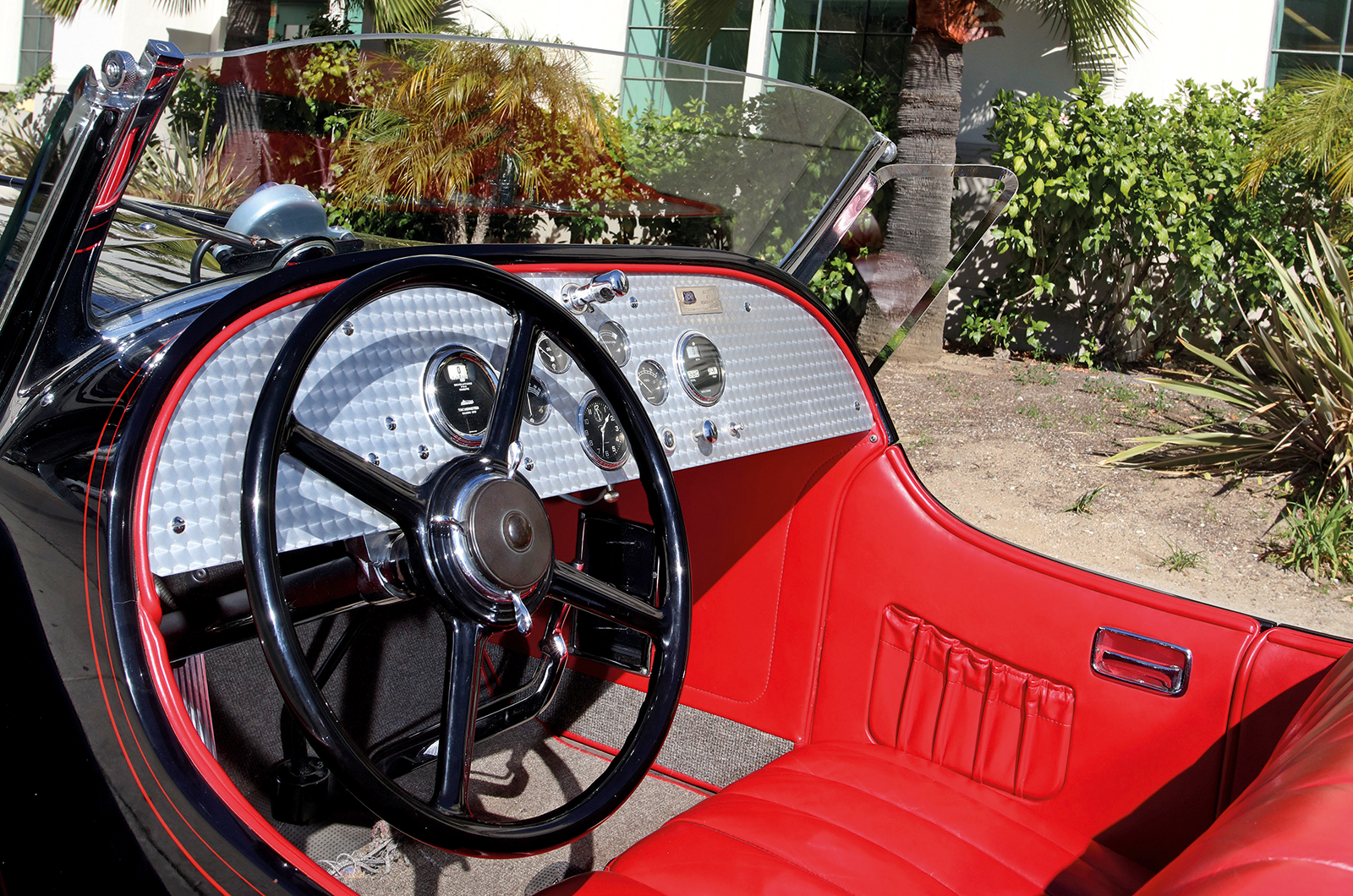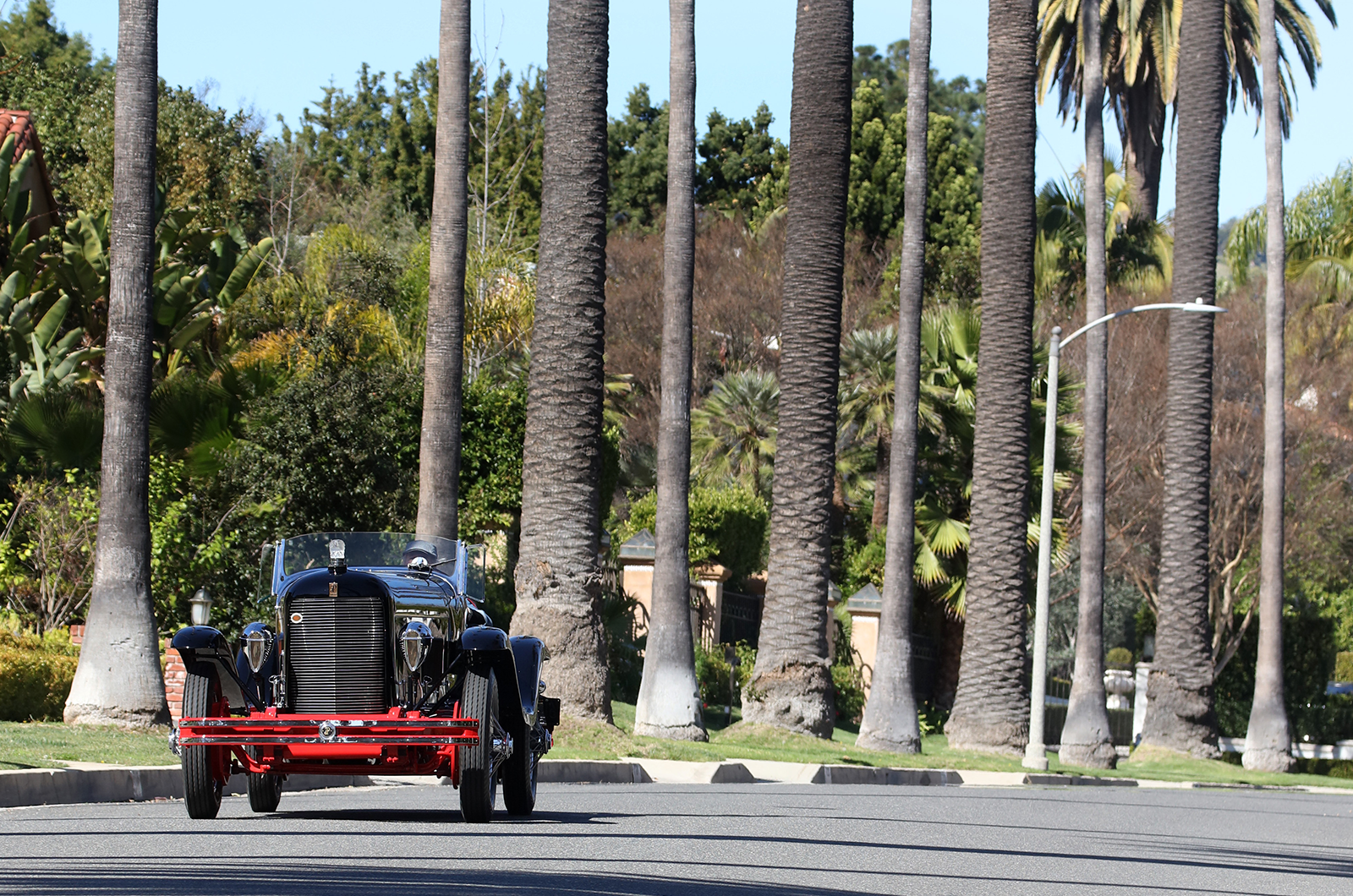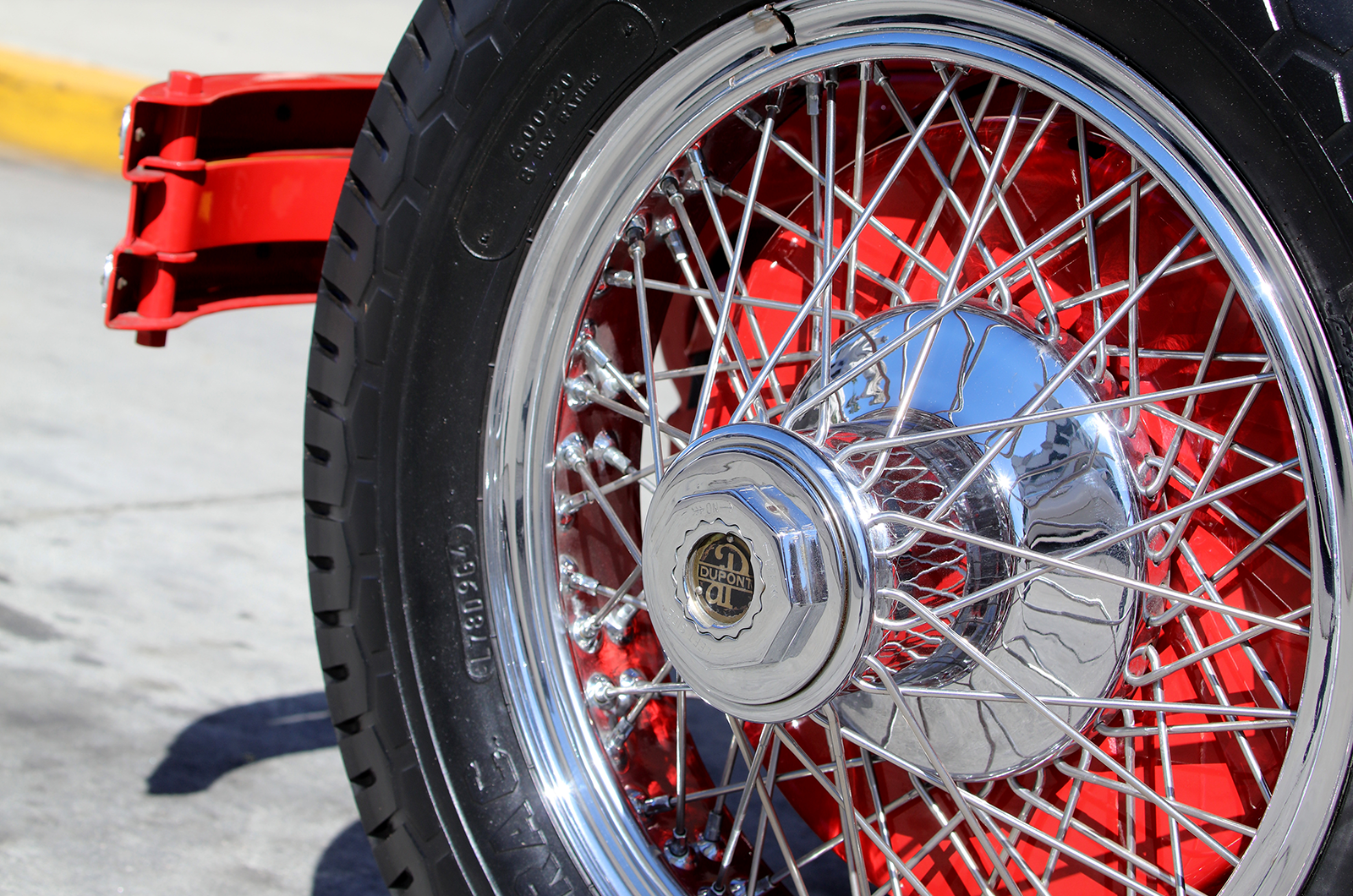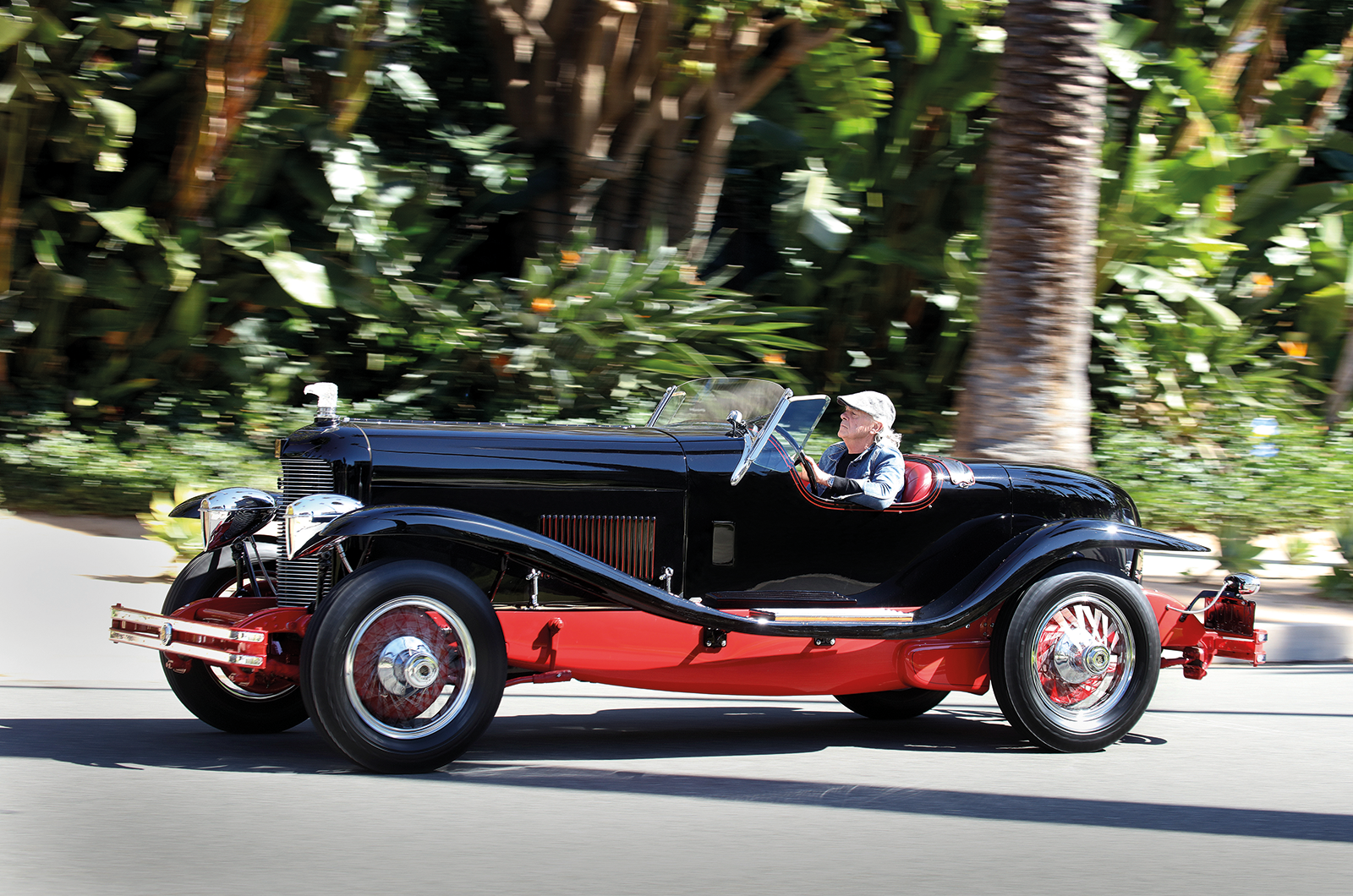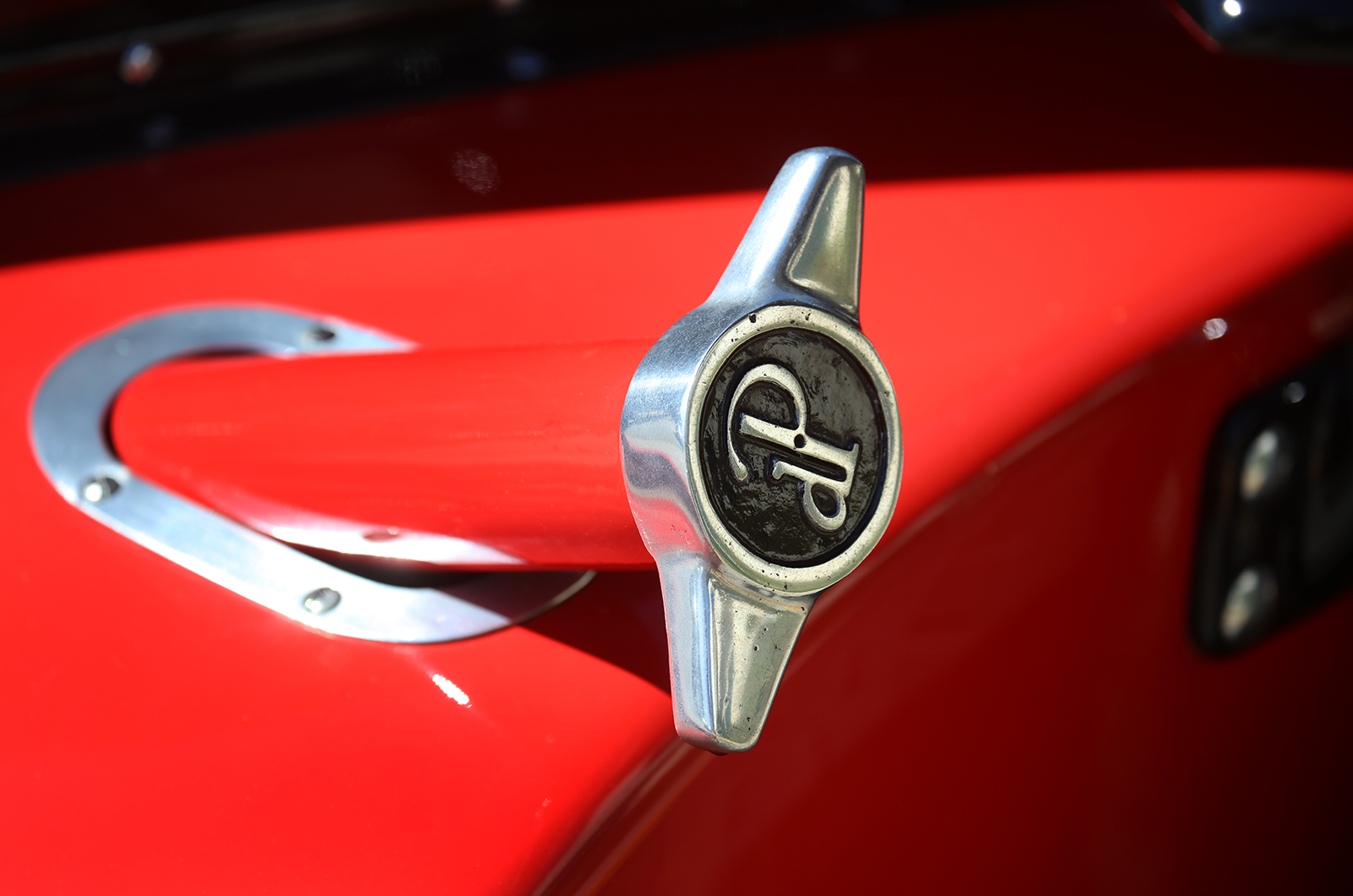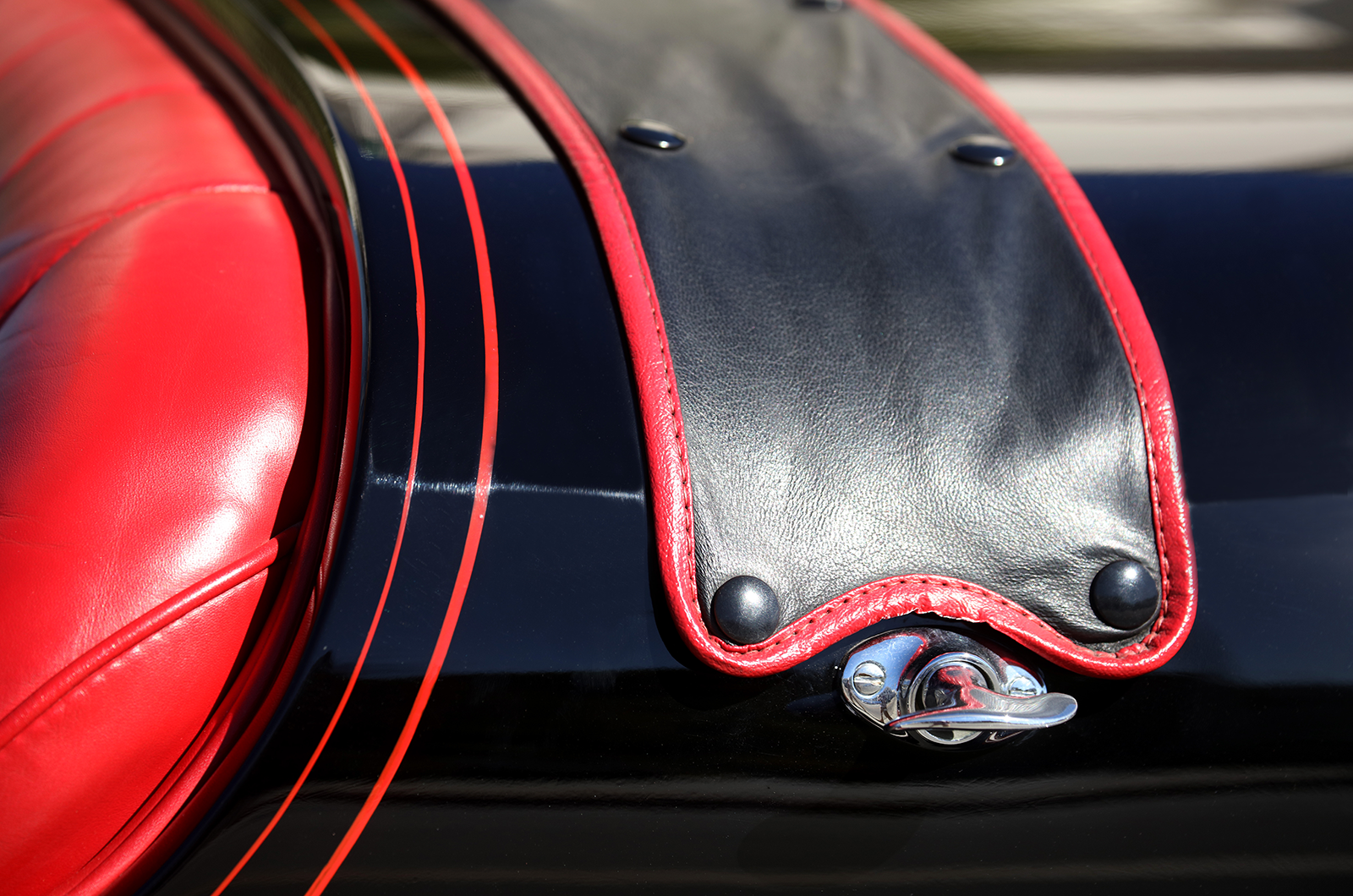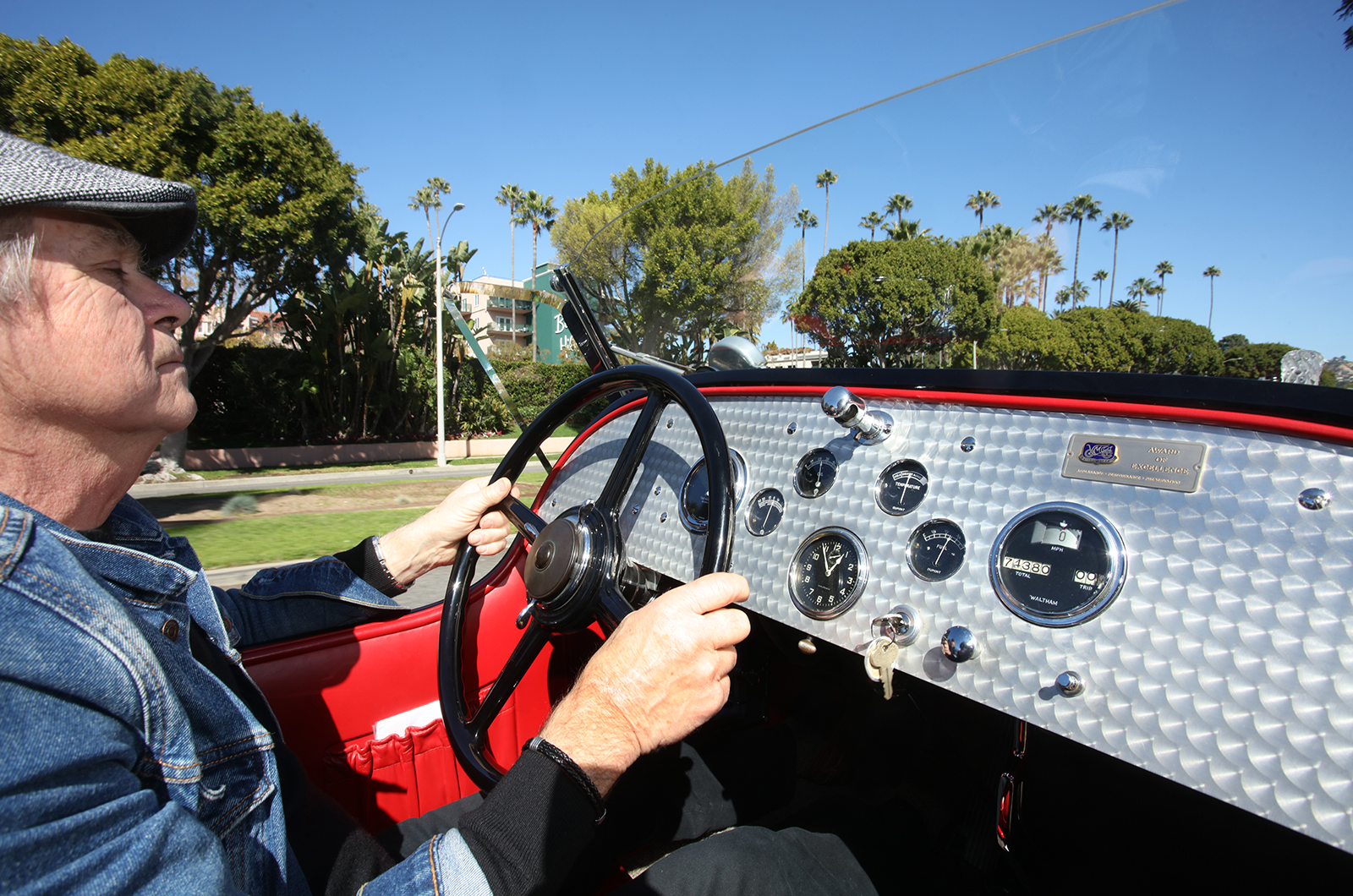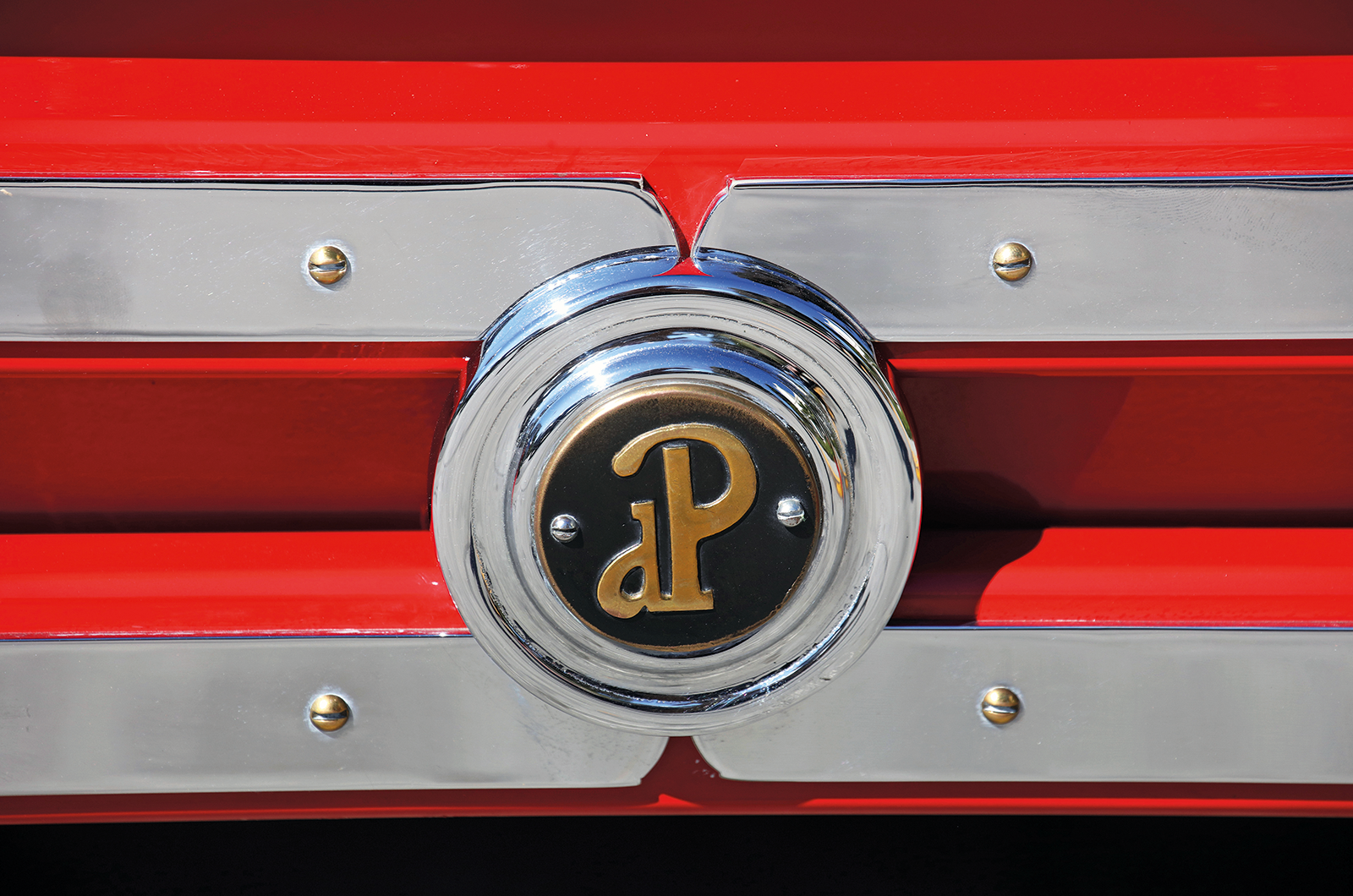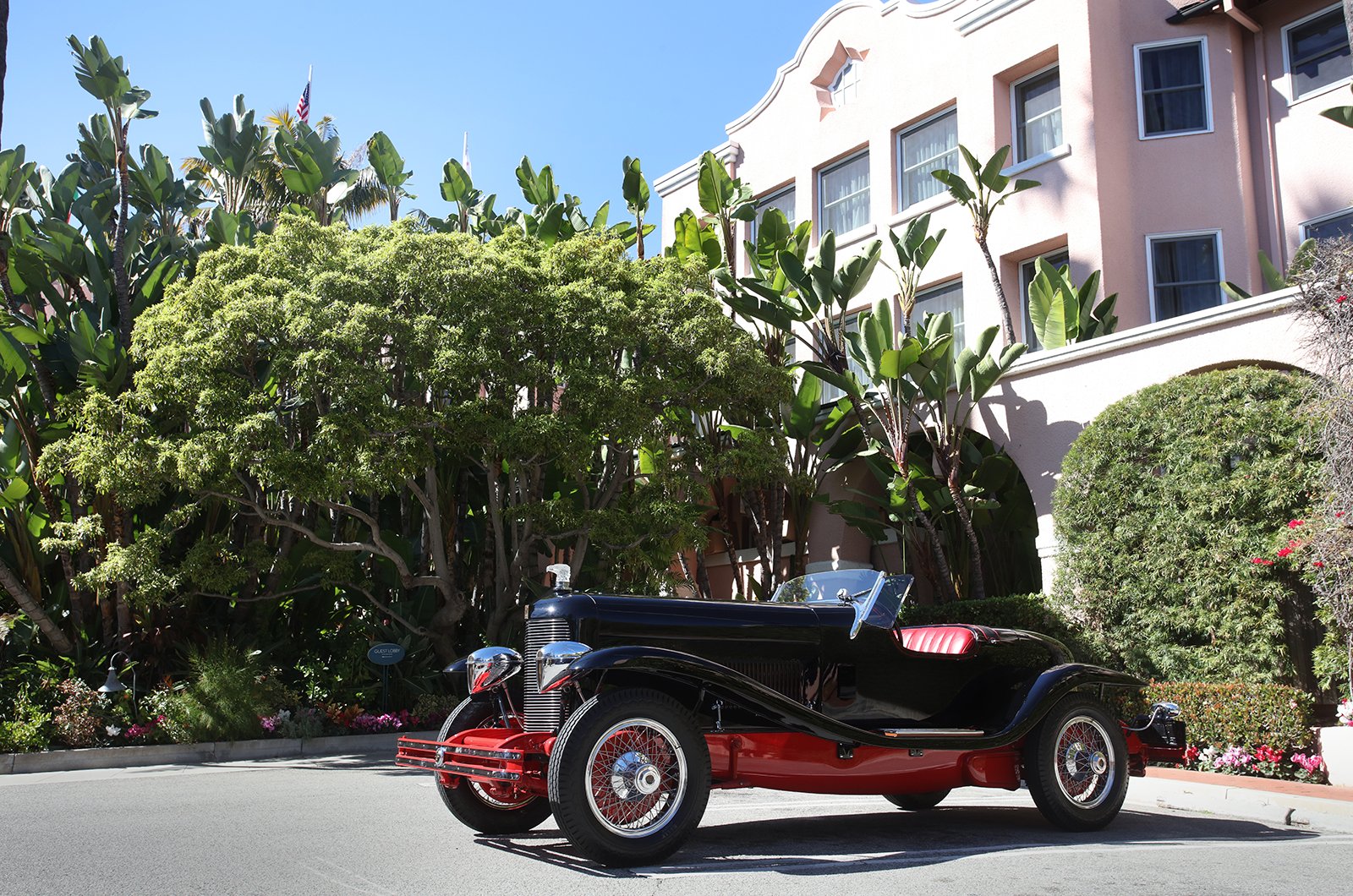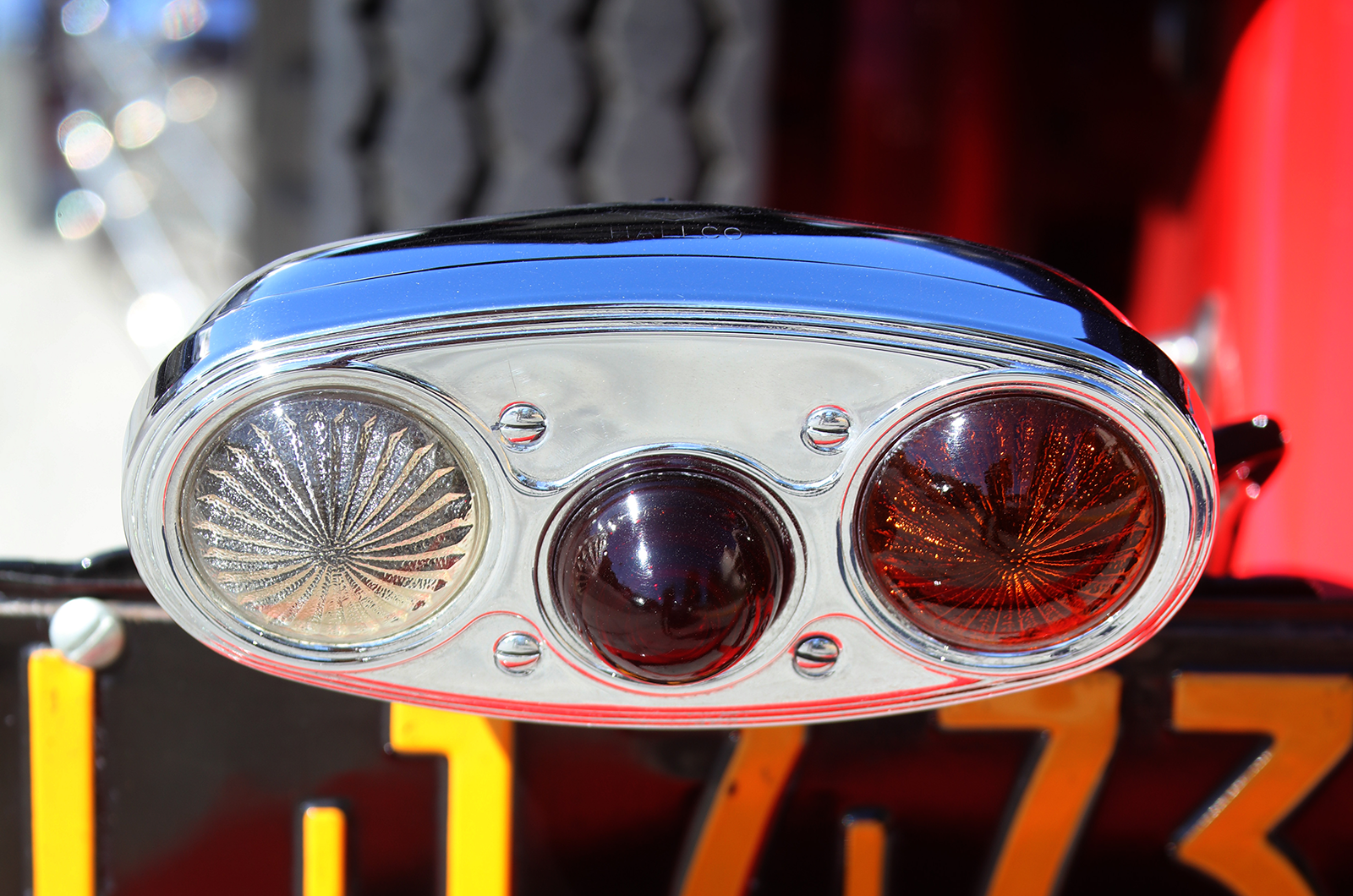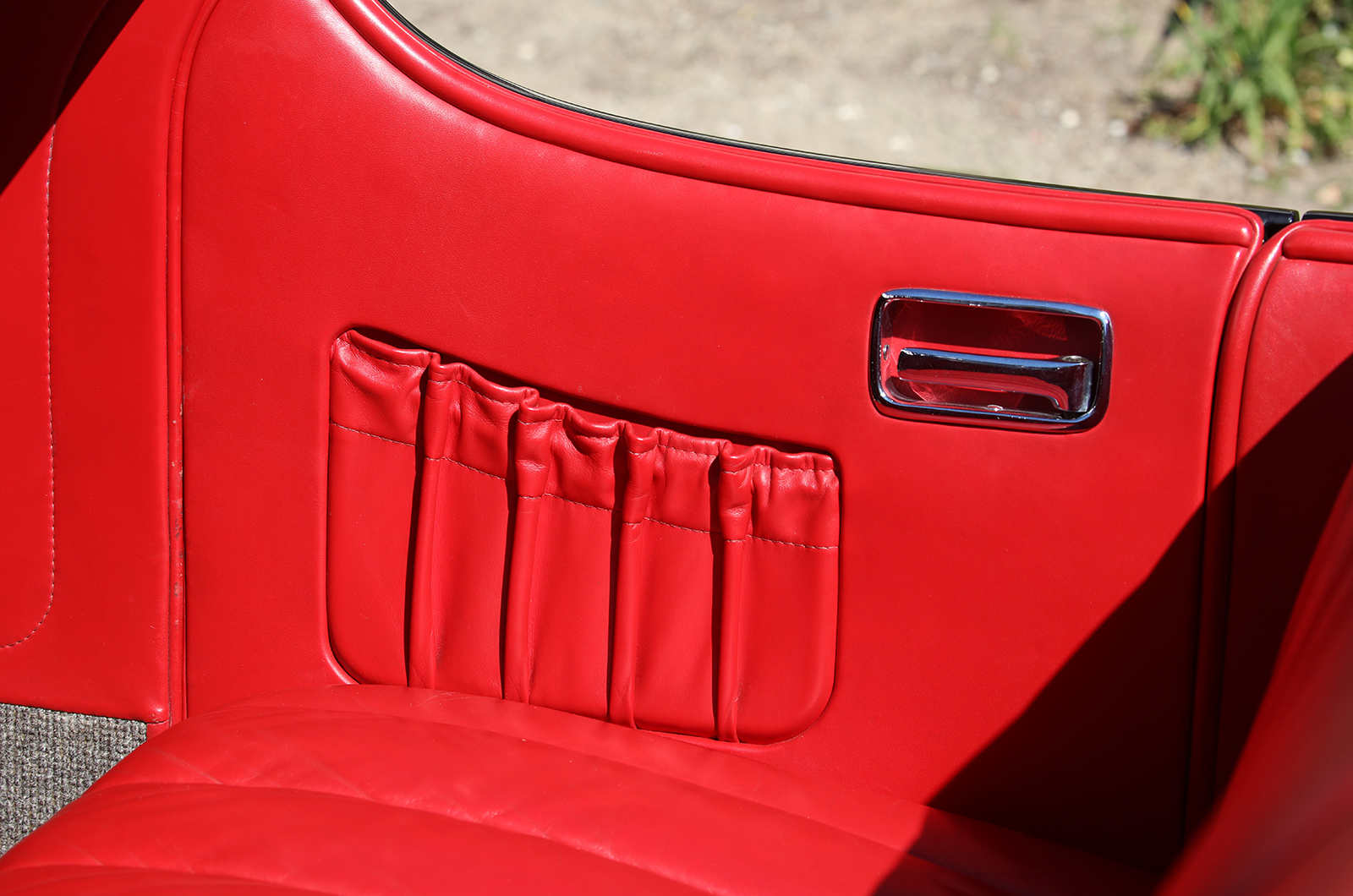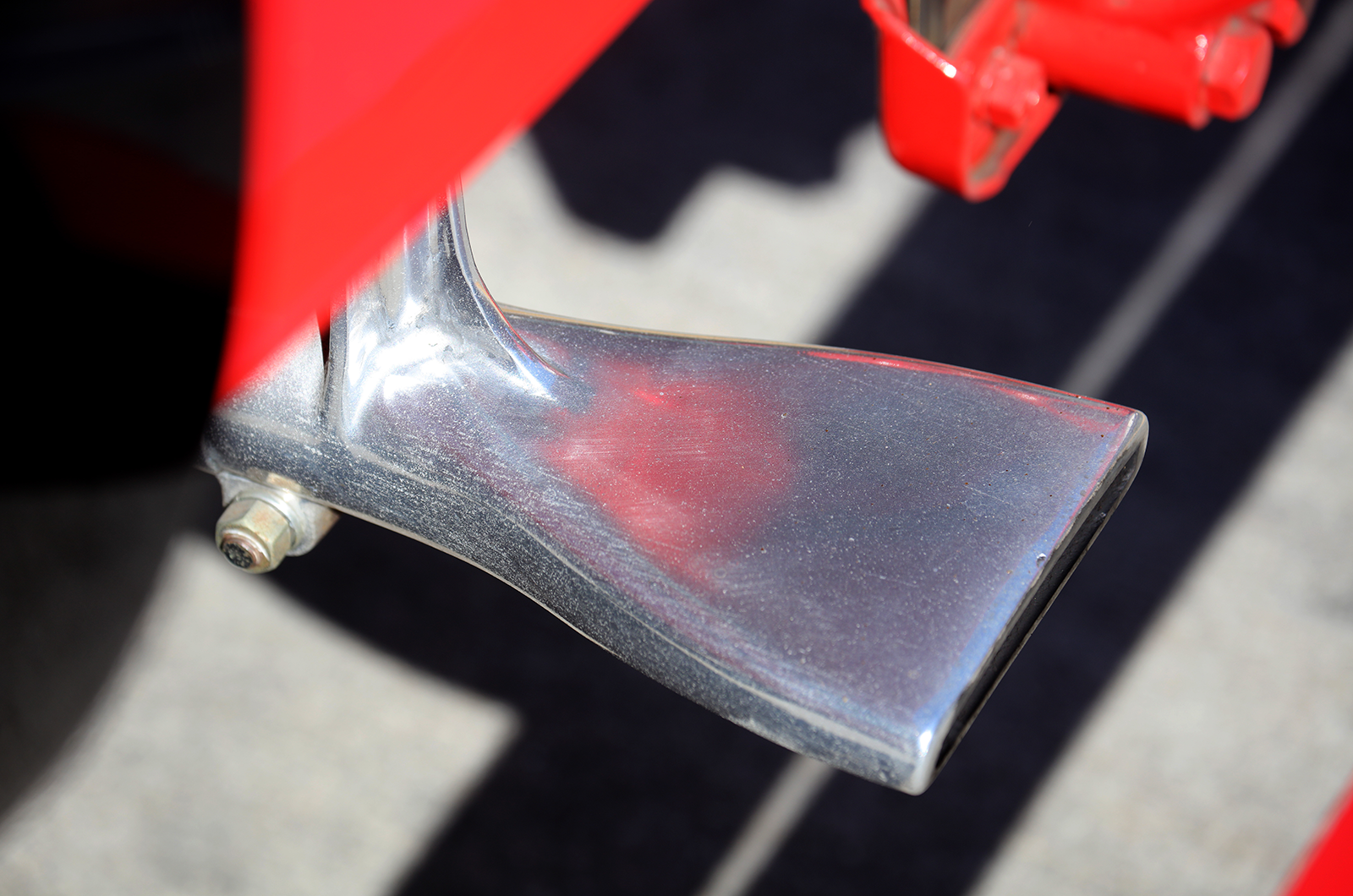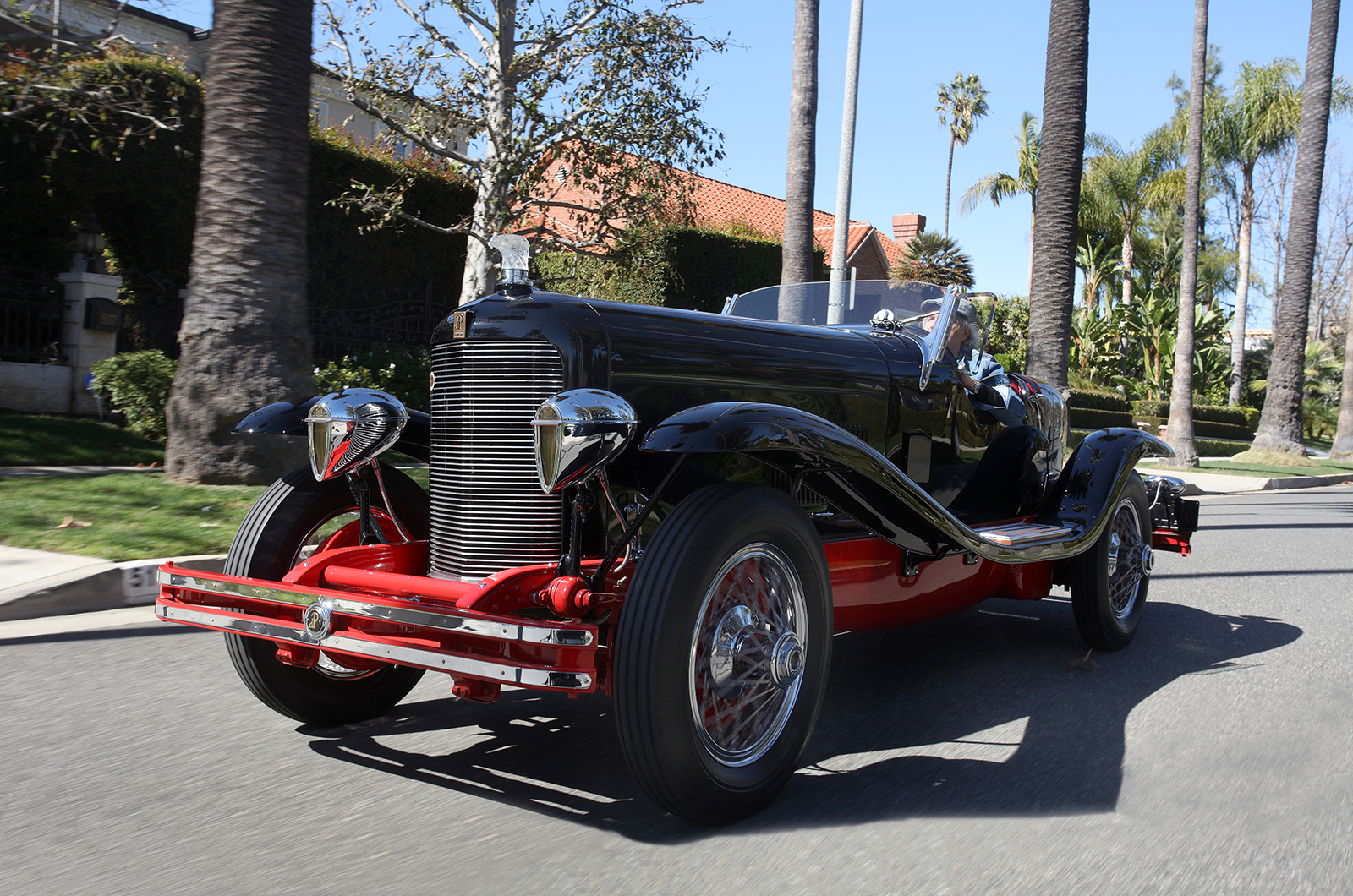“It’s obvious duPont was looking for quality and, as the build sheets show, it basically extracted the best combination for its wealthy customers from proprietary manufacturers of brakes, transmissions and engines. It has a sporting feel which was unequalled in America after Stutz stopped making performance cars. Only the arrival of the Auburn Speedster matched its excitement.”
The car featured here is just such a duPont Model G Speedster, delivered new in 1929 to Los Angeles with a hefty price-tag of $5335.
The car remained unrestored until the late 1980s, when it was acquired by Robert E Petersen, the publishing legend and founder of the Petersen Automotive Museum.
The duPont was fully restored before display, but since the museum’s impressive revamp in 2015 it has been stored in the basement as part of the amazing reserve collection.
With an aluminium body built by the Merrimac Body Company in Massachusetts, the design features the distinctive high-flowing wings and painted radiator cowl.
To see any duPont at a concours or in a museum is a treat but to witness a Speedster out on the streets of Los Angeles, following in the wheelstracks of Fairbanks, is extraordinary.
Yet the Petersen’s conservator Dana Williamson is happy to exercise the duPont along Wilshire Boulevard.
With its lofty cockpit there are grand views all round, which is useful when mixing with impatient LA traffic.
The Speedster would be the perfect transport to tour the city’s famous Art Deco architecture, but there’s no point in trying to find the Fairbanks’ Pickfair mansion up on San Ysidro Canyon because it was controversially demolished in 1990.
Despite the car’s near two-ton heft, the beefy sidevalve straight-eight has a gutsy delivery and it is capable of reaching 60mph from rest in 16 secs, with a 100mph top speed
The Warner Hi-Flex four-speed gearbox will downchange cleanly without double-declutching, but the firm ride feels vintage over potholes and drain covers.
The Ross cam-and-lever steering has an enormous turning circle, but the quick ratio with 3½ turns from lock to lock takes muscle.
In contrast, the light, strong Lockheed hydraulic brakes are a revelation for a vintage machine.
There’s no chance to truly test the duPont’s handling in the city and, frustratingly, the nearby canyon roads are beyond the museum’s limits.
Yet period reports relate an impressive balance, despite the nose-heavy stance.
With its Le Mans and Indy 500 ambitions, there is no doubt that the duPont Model G is a true sports car, and an unsung precursor to the post-war American renaissance led by Briggs Cunningham and Kurtis Kraft.
Images: James Mann
Thanks to Fred Simeone; Petersen Automotive Museum
READ MORE
Keeping the faith: restoring a Duesenberg Model SJ
Simplicity is elegance: Hispano-Suiza J12 by Vanvooren
United estates: Buick Estate Wagon, Chrysler Town & Country and Ford Country Squire
Mick Walsh
Mick Walsh is Classic & Sports Car’s International Editor

